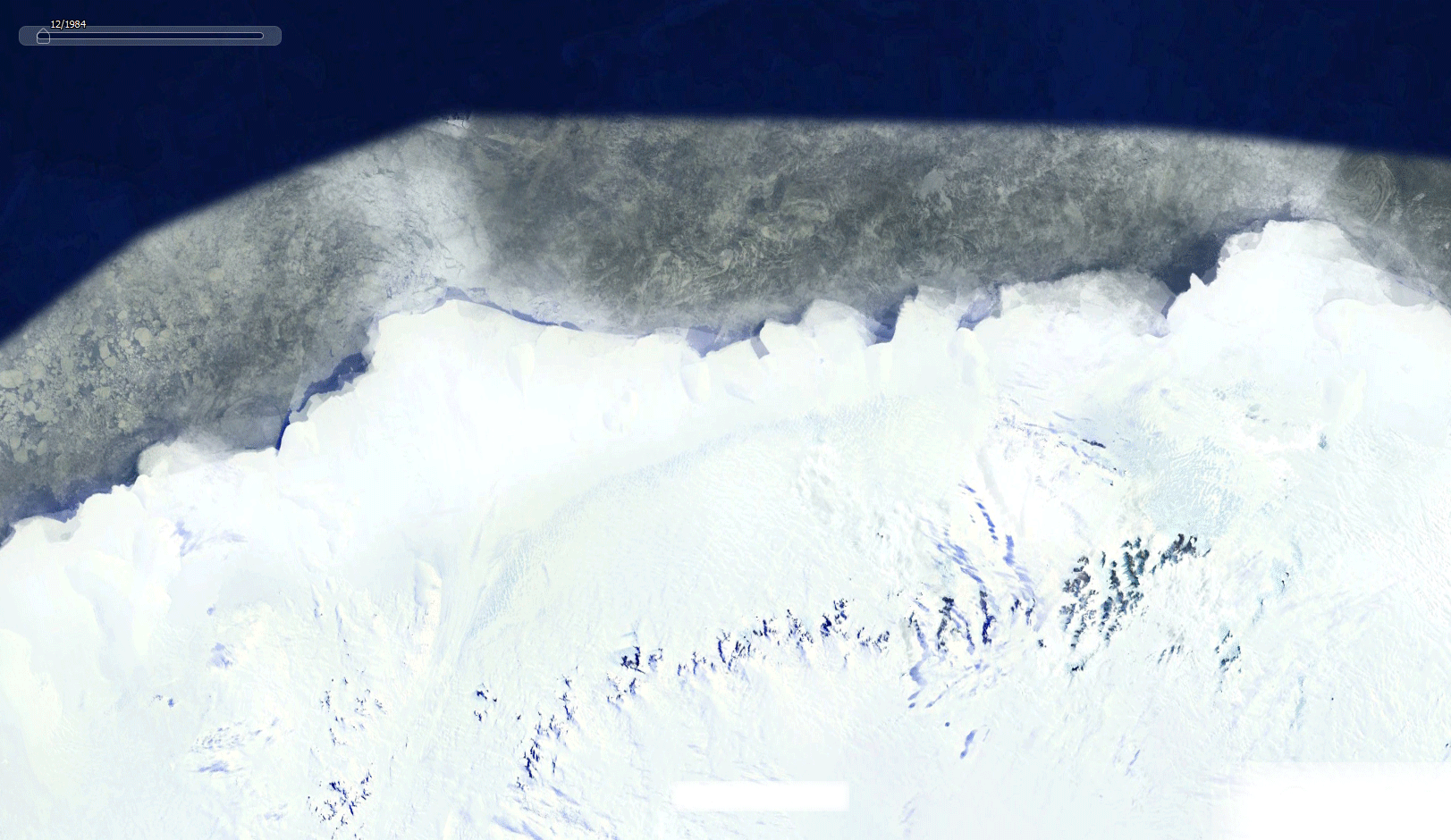"Polar Sounds is a unique project reimagining some of the little-heard sounds of the Arctic and Antarctic regions, reflecting on climate change and the evolving sounds of the polar seascapes."
This piece is made entirely from a recording of "singing sea ice" from an Antarctic research station located at 71°S 008°W
‘Conversations at the Edge of the World’ uses field recordings from a remote research station in the Antarctic, in collaboration with the Helmholtz Institute for Functional Marine Biodiversity (HIFMB) and the Alfred Wegener Institute, Helmholtz Centre for Polar and Marine Research (AWI).
The Polar Sounds project raises awareness of the effects of climate change on our sonic environment, working with sounds that may disappear within our lifetimes, as the sea ice continues to melt at a rapid pace.
"Polar Sounds is a unique project reimagining some of the little-heard sounds of the Arctic and Antarctic regions, reflecting on climate change and the evolving sounds of the polar seascapes."
‘Conversations at the Edge of the World’ imagines into the tonal and rhythmic potential of the original recording of singing sea ice. A slow 50Hz heartbeat acts as a reliable temporal framework from which shorter cyclic episodes and sporadic sonic events are aligned (sounds best on headphones or speakers with good bass response!)
A higher pitched conversation between ice and ocean is isolated, re-pitched and spatialised using binaural panning production techniques, to create a harmonically-rich texture which immerses the listener at the heart of its song.
Both of these sounds are extracted directly from the original recording and demonstrate the wide-range of frequencies captured in the sonic events that occur at the edge of the ice shelf. Other abstract textures and acousmatic instances appear as 'imaginary' audible hallucinations, triggered by the ethereal and ever-evolving content of the conversation at the edge of the world. This ~5 minute composition is best listened to on headphones and in a very quiet environment, as many of the sounds are very subtle and delicately layered.
The field recording of Antarctic sea ice captures a vast and rich spectrum of sonic events, ranging from low booms at <50Hz to siren-like shrills 10kHz and above. Antarctic sea ice is much thinner than Arctic ice and is subject to constant change as this frozen landscape is continually evolving at different temporal scales: From gradual and cyclical seasonal changes to sudden and more sporadic cracking and separation events. The recordings appear to breathe and sing as a reminder that the sea ice is not as static as it appears in the satellite imagery that we have become so familiar with.
The sea ice is a living organism in itself, as well as providing a food source, and habitats for other living organisms. The cracks and fissures that we hear evidence of in the recording, allow animals to feed and whales to breathe. Frazil ice (formed at the points where the ice meets the ocean and made of quick-freezing and chaotically organised crystals) also acts as a winter food store for penguins, seals and whales, trapping many nutrients and small organisms through the cold months, and releasing them again during warmer months.
The location at which recording 037 was made (71°S 008°W), is close to the edge of the ice shelf, where movement between the ice and the ocean is likely to be particularly turbulent, with solid and liquid states engaged in a constant state of negotiation. The 'Singing Sea Ice' recording captures this rich and ongoing conversation, which may one day become a sound of the past if climate change continues to erode this highly-active frozen landscape.
More information HERE


